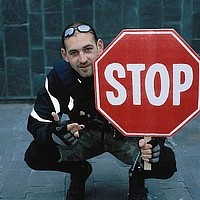
According to John W. Gofman, MD, PhD, “50% of ALL cancers in the 20th century have been caused by ionizing radiation of the type we would call low level... about three quarters of all the breast cancers in the 20th century were induced by ionizing radiation…including medical.”
Dr. Ernest Sternglass Nuclear Contamination and Cancer
The question was never whether or not a nuclear catastrophe would take place, the question has always been "when".
Now we know that the latest "when" is March 2011 and the "where" is not just Japan but all continents reached by atmospheric winds.
The NRC had offered us some loose guidelines approximately 18 years after the Three Mile Island meltdown. The suggestion was that communities close to a nuclear reactor stock potassium iodide and distribute it within an hour of the catastrophe in order to decrease the risk of thyroid cancer.
Here is a link to the CDC website that discusses uses of and dosage of potassium iodide CLICK HERE.
According to the FDA, the following doses are appropriate to take after internal contamination with (or likely internal contamination with) radioactive iodine:
- Adults should take 130 mg (one 130 mg tablet OR two 65 mg tablets OR two mL of solution).
- Women who are breastfeeding should take the adult dose of 130 mg.
- Children between 3 and 18 years of age should take 65 mg (one 65 mg tablet OR 1 mL of solution). Children who are adult size (greater than or equal to 150 pounds) should take the full adult dose, regardless of their age.
- Infants and children between 1 month and 3 years of age should take 32 mg (½ of a 65 mg tablet OR ½ mL of solution). This dose is for both nursing and non-nursing infants and children.
- Newborns from birth to 1 month of age should be given 16 mg (¼ of a 65 mg tablet or ¼ mL of solution). This dose is for both nursing and non-nursing newborn infants.
How often should I take KI?
A single dose of KI protects the thyroid gland for 24 hours. A one-time dose at the levels recommended in this fact sheet is usually all that is needed to protect the thyroid gland. In some cases, radioactive iodine might be in the environment for more than 24 hours. If that happens, local emergency management or public health officials may tell you to take one dose of KI every 24 hours for a few days. You should do this only on the advice of emergency management officials, public health officials, or your doctor. Avoid repeat dosing with KI for pregnant and breastfeeding women and newborn infants. Those individuals may need to be evacuated until levels of radioactive iodine in the environment fall.
Taking a higher dose of KI, or taking KI more often than recommended, does not offer more protection and can cause severe illness or death..
The Union of Concerned Scientists (ucsusa.org) tracks the safety record of nuclear reactors currently operating in the United States.
*********************************************************************
April 26, 2006 marks the 20 year anniversary of the devastating Chernobyl Nuclear
Accident... a nuclear accident in any country becomes a nuclear accident for us.
Read here about the after effects.
**********************************************************************
Scroll to the bottom of this page or link to
This article can be found on the web at
http://www.thenation.com/doc/20071001/mangano